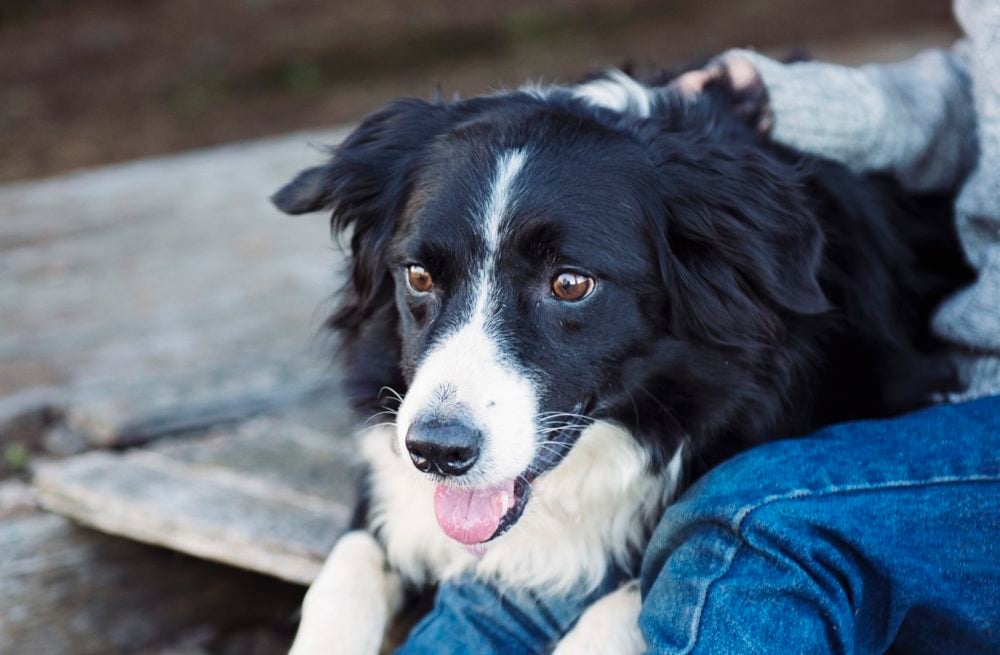The chemistry behind social behaviour in animals, including the bond between people and dogs – and the lack of one between humans and wolves – could help scientists identify new ways of treating social disorders such as autism and schizophrenia.
‘We think that the genetic foundation for social behaviour is very similar in dogs and humans. There is kind of a common genetic architecture or social behaviour that humans have tapped into and that has led to the most suitable dogs being chosen for domestication,’ said Professor Per Jensen from Linköping University in Sweden.
He coordinates the EU-funded GENEWELL project, which is looking at how stress responses are controlled in animals. In their research on dogs, his team has focused on oxytocin, a chemical also known as the love hormone, which is known to strengthen social bonds in both animals and humans.
‘Oxytocin is an extremely strong mediator of the dog-human bond,’ said Prof. Jensen. ‘People have looked at the effects of oxytocin levels on both physical contact and eye contact and there’s no doubt that oxytocin is a really important player in maintaining and establishing the cooperation and the contact between dog and owner.’
To investigate how the hormone works, researchers sprayed dogs’ noses with either saltwater or oxytocin, and then monitored how they responded to different tasks.
Many dogs that received oxytocin quickly turned to their owners for help when the tasks became too difficult. But even though the oxytocin-sprayed dogs were often faster to ask for help than those who received just saltwater, the scientists noticed that the time taken to ask for help still varied considerably among the oxytocin-sprayed dogs. The hormone itself wasn’t the only factor at play.
‘Oxytocin is an extremely strong mediator of the dog-human bond.’
-Professor Per Jensen, Linköping University, Sweden
Receptor
Within the brain, oxytocin must attach to a receptor to begin working. Dogs can possess one of several different variants of oxytocin receptor, depending on their genes. What the researchers noticed was that some dogs, all with a particular kind of receptor, responded very strongly to the oxytocin spray. They turned to their owners for help a lot faster than dogs with other variants.
Other research groups have carried out similar tests on wolves. Unsurprisingly, the wolves almost never went to humans to ask for help to complete their task. But, after examining some samples of wolf DNA, the researchers found the same variants of oxytocin receptors as in dogs.
The results show that wolves can possess a type of oxytocin receptor that makes them more likely to engage with people. Although not the full story, that’s probably part of the reason the first wolves became domesticated.
The researchers think that human-wolf friendships were more of a mutual cooperation than a human-driven endeavour – that more friendly wolves, possessing certain oxytocin receptors, were much more willing to approach people and so relationships developed.
Back in Sweden, the scientists’ next move was to examine the dogs’ genomes more closely. They isolated five different genes that were most strongly associated with the dogs’ help-seeking behaviour.
Prof. Jensen says that, interestingly, four out of these five genes are also associated with autism, ADHD and schizophrenia. In the future, this may open the way for using dogs as model animals to study social impairments in humans.
Therapeutic
Giving oxytocin to people with such social disorders is already thought to have a therapeutic effect. A characteristic of autism is to not look others in the eye, and oxytocin increases the likelihood that a person (or a dog) will do this. Trials are currently underway where oxytocin is given to treat patients with autism and schizophrenia.
The EU-funded BIOSOCIOCOG project, however, suspects that the oxytocin system needs another chemical, dopamine, to work properly. Dopamine is known to be important in the reward system of the brain, and the researchers think that oxytocin and dopamine need to work together to encourage social and cooperative behaviour.
Studies have already shown that both hormones are needed for any selfless action to take place in the animal world – for example, vampire bats sharing blood with each other, mother voles showing affection to their infants and apes performing group grooming. The project is now investigating whether the same is true for humans.
‘My theory was that for pro-social behaviour, you need both systems to interact. The oxytocin system depends on the dopamine system,’ said Professor Diana Prata, from the Instituto de Medicina Molecular in Lisbon, Portugal, who is the lead researcher of the BIOSOCIOCOG project.
‘There was some evidence in animal studies where they promote affiliative (relationship-building) behaviour with oxytocin, but then, when they (the researchers) blocked the dopamine system, that social behaviour was decreased. We are trying to also demonstrate that the two systems interact in humans.’
Prof. Prata’s research is largely based on MRI (magnetic resonance imaging) scans. The researchers view what happens in the brain when people play the prisoner’s dilemma game, where people are asked to choose either to cooperate with or betray a partner, without ever having met them. If they cooperate, they each receive a small and equal proportion of a reward. If one cooperates and the other does not, the one who does not will win all of the reward, while the one who did cooperate gets nothing.
The BIOSOCIOCOG team are specifically interested in which, and how much, brain areas are illuminated when participants experience a social reward or punishment. Oxytocin is then delivered to see if anything changes.
This research will indicate whether drugs for social disorders should take a combined approach using both oxytocin and dopamine, which could lead to the development of new, more effective treatments.
Originally published on Horizon magazine.

